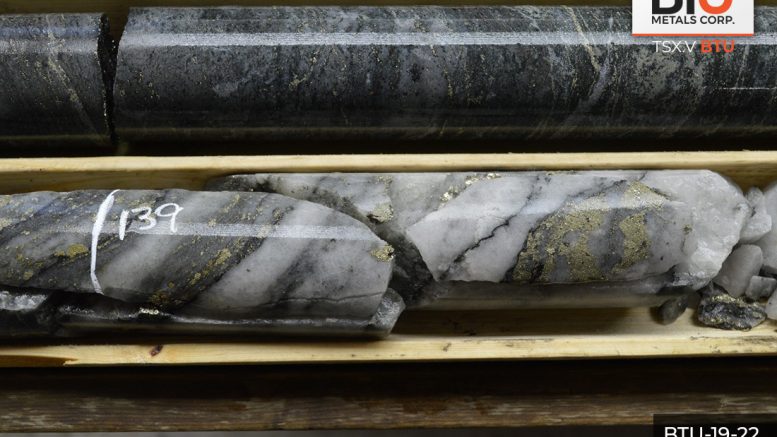Drilling at BTU Metals’ (TSXV: BTU) 197-sq.-km Dixie Halo project in Ontario’s Red Lake district returned continuous volcanogenic massive sulphide-style mineralization over 300 metres, starting at surface, with metal grades increasing with depth.
Hole 19-25 includes a 173-metre interval grading 0.35% copper-equivalent, starting at 182 metres down-hole. Within this interval are higher-grade sections, such as 8 metres of 2.27% copper-equivalent and 2 metres of 2.75% copper-equivalent.
“This initial drill program on the newly outlined TNT target has rapidly increased our understanding of the strong alteration and associated mineralization,” Bruce Durham, the company’s vice president of exploration, said in a press release. “The fact that we have intersected several significantly mineralized intervals in our initial testing is very encouraging.”
BTU discovered the TNT target in November, interpreted as a gold-enriched volcanogenic massive sulphide system. The discovery hole returned 44 metres of 1.14% copper-equivalent starting at 300 metres. BTU drilled a total of 17 holes at TNT; additional assays are pending.
To date, drilling has traced the TNT target mineralization over 2.2 km of strike, and geophysical surveys suggest widths in the range of 200 metres to 500 metres. This target remains open on strike. Past drilling also suggests that grades of the mineralization increase with depth.
Additional downhole geophysical surveys are ongoing at TNT, with the second phase of drilling planned in the coming weeks.
Additional drilling is ongoing at the Dixie Creek target area, which is structurally complex and may host gold-bearing structures related to the LP fault outlined by Great Bear Resources (TSXV: GBR). The Dixie Halo property is contiguous with Great Bear’s Dixie project in the Red Lake district in Ontario.


Be the first to comment on "BTU hits more VMS-style mineralization at Dixie Halo"